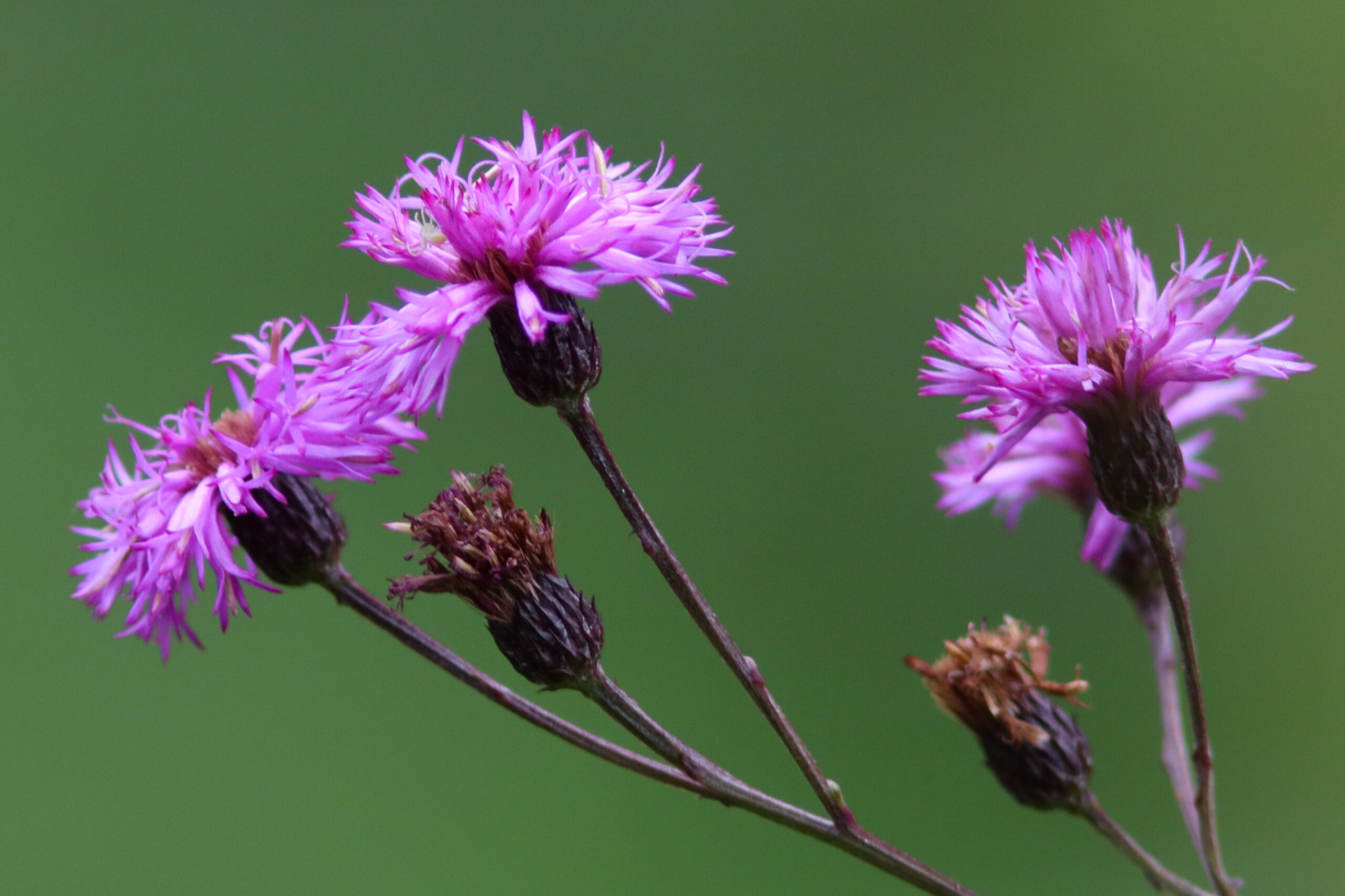
Anyone who knows me knows I am an earth tone guy. Colors like magenta or purple just don’t fit. Yet, if you asked me my favorite flower, really close to the top would be the New York ironweed (Veronia noveboracensis). This colorful plant jumps out in the landscape! I can spot it at 60 mph.
We planted a small cluster in our yard to provide this splash of color during the late summer months. Each small flowerhead consists of many smaller flowers. The plant standing about 7 feet tall hosts numerous flowers. The flowers attract quite a variety of insects to our yard. One day last week, I saw the Ruby-throated Hummingbirds stop in for a sip.
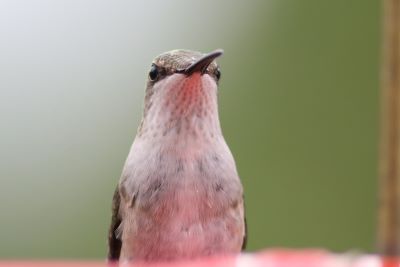
This week, the insects stopping by included numerous Sachem (Atalopedes campestris) (as seen in top row below), Peck’s Skipper (Polites peckius) (2 images on second row), Mason bee (Osmia sp.) (second row), Longhorn Bee (Melissodes sp.), 2 images on third row), Common Eastern Bumble Bee (Bombus impatiens) and several unidentified flies and bees. Over the years, many varieties of butterflies, bees, and wasps settle down for a little food from this plant.
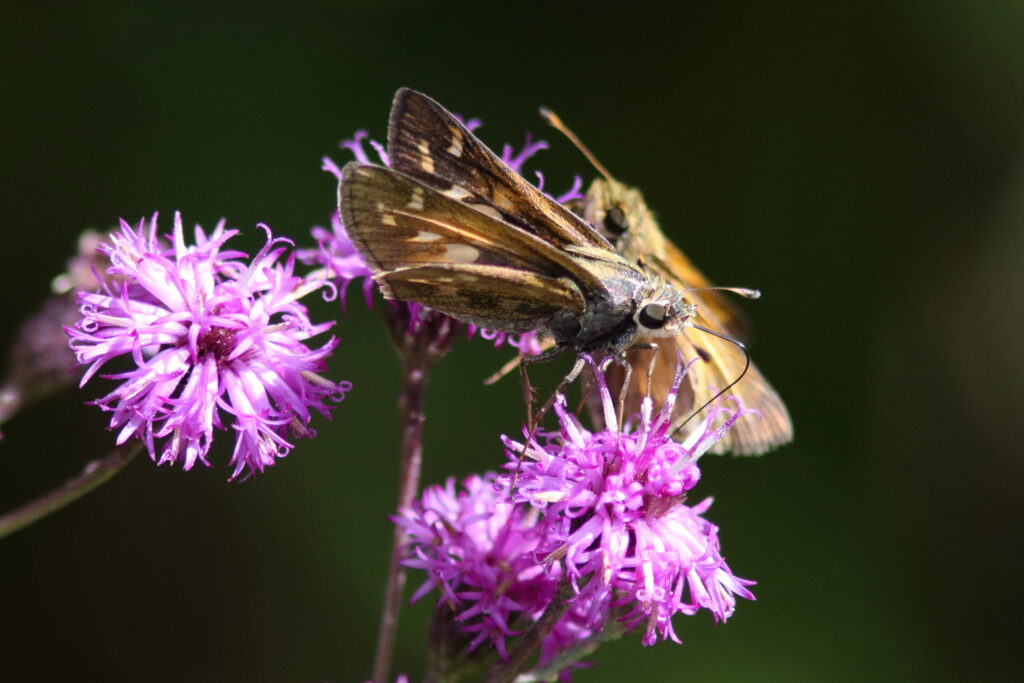
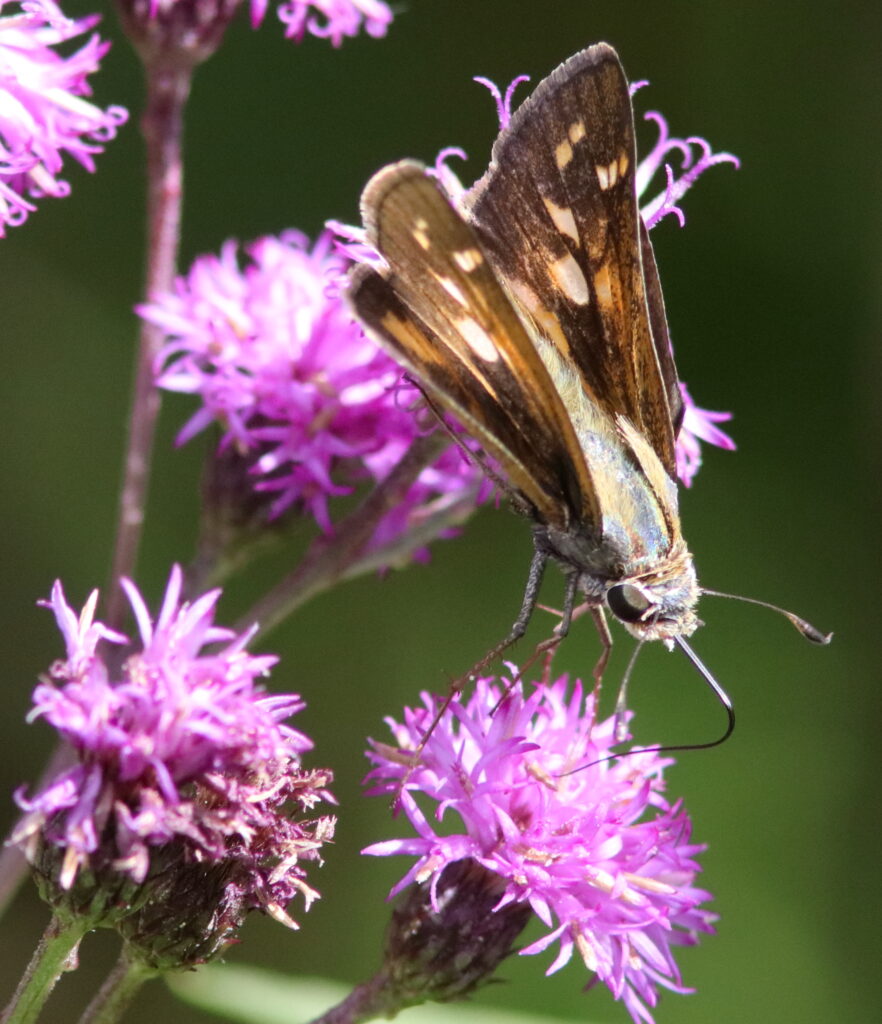
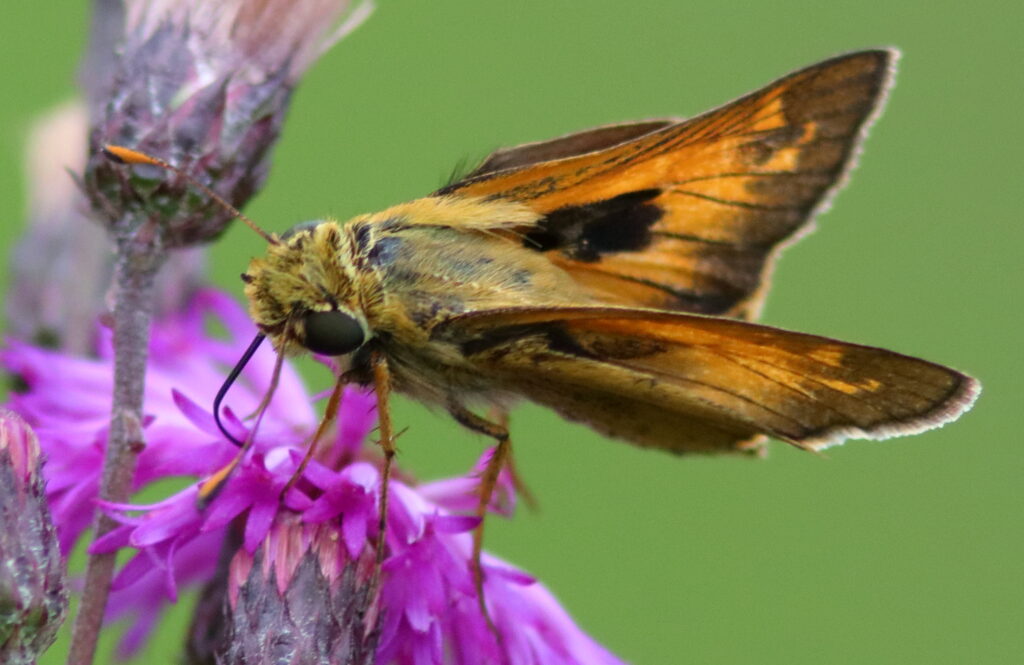
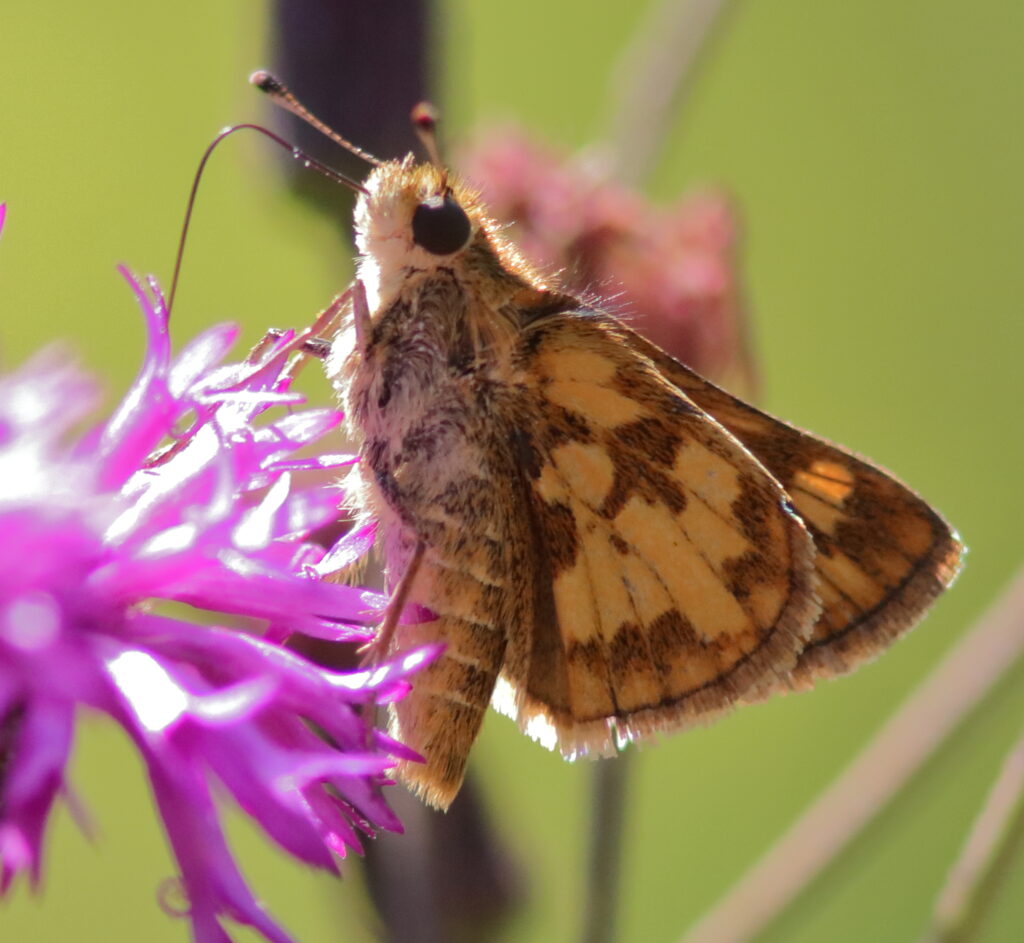
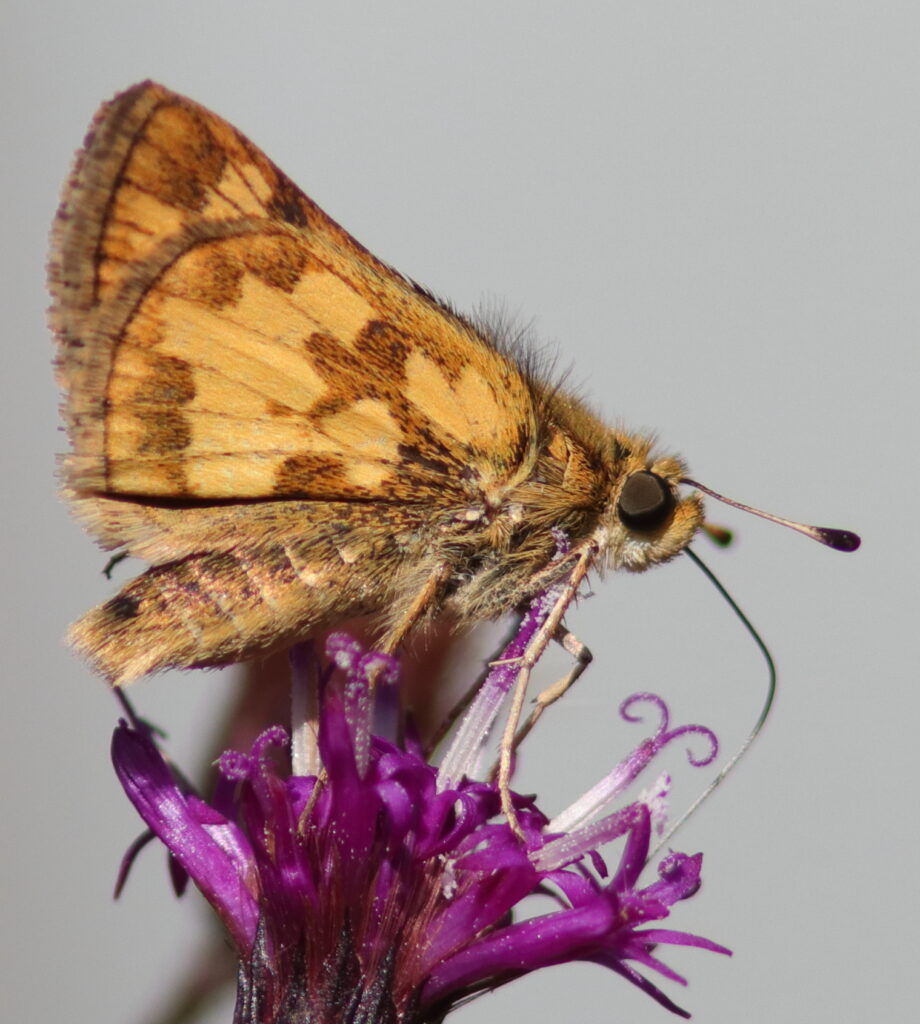
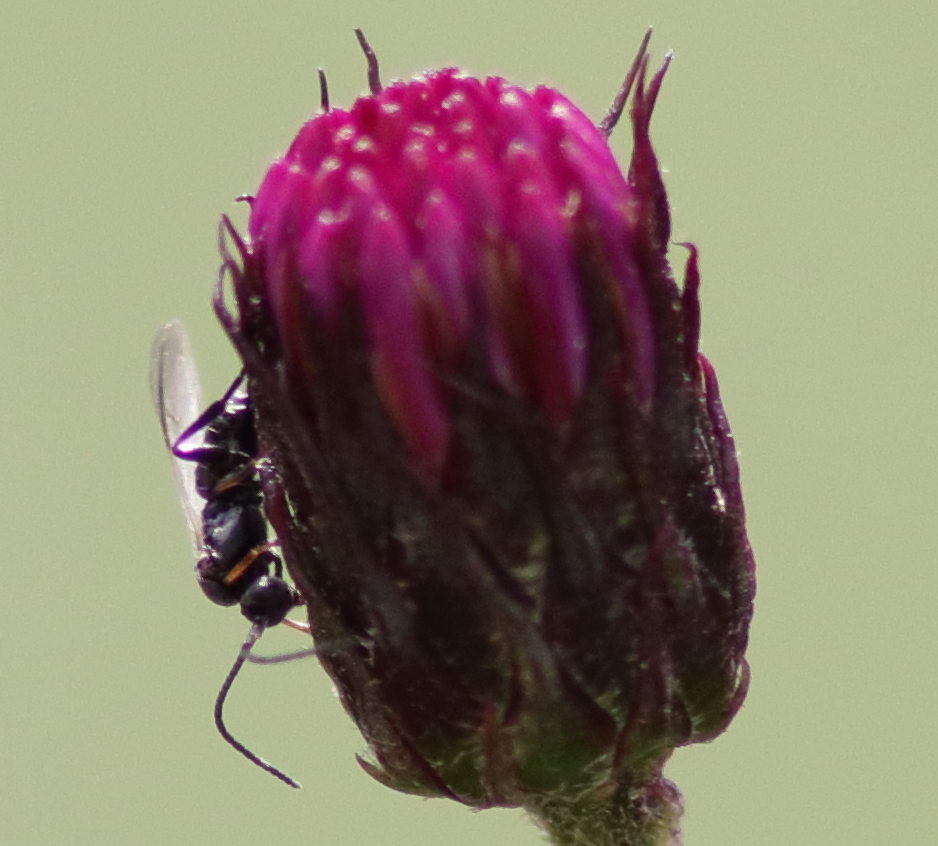
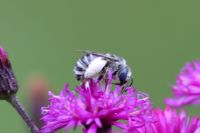
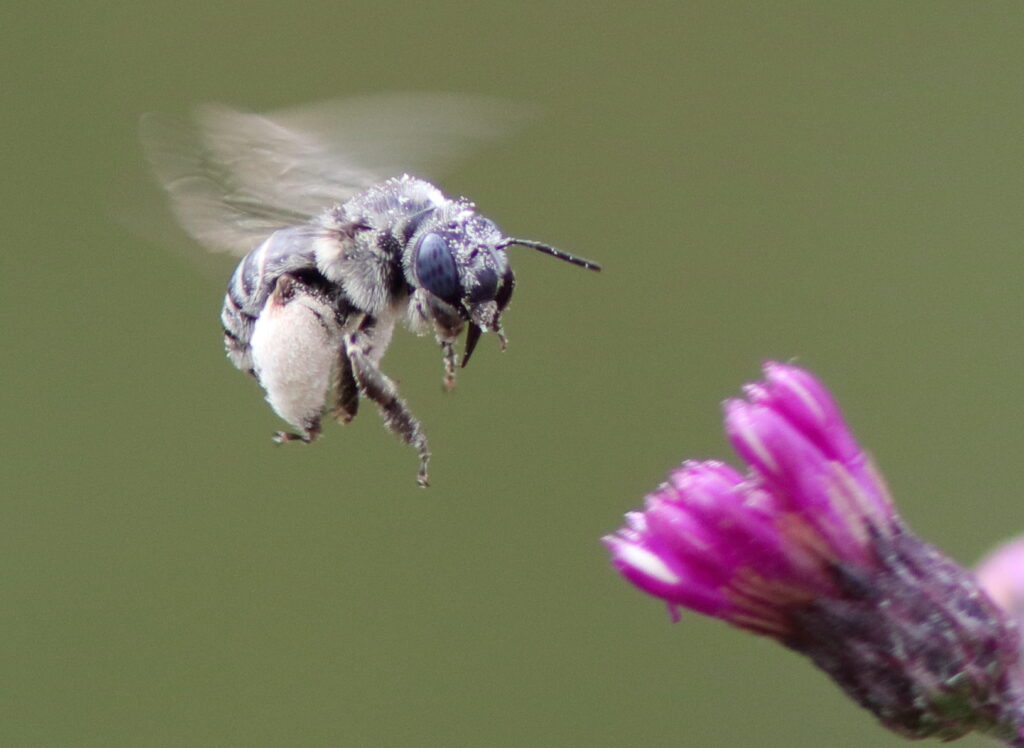
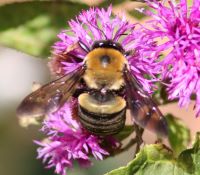
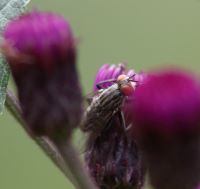
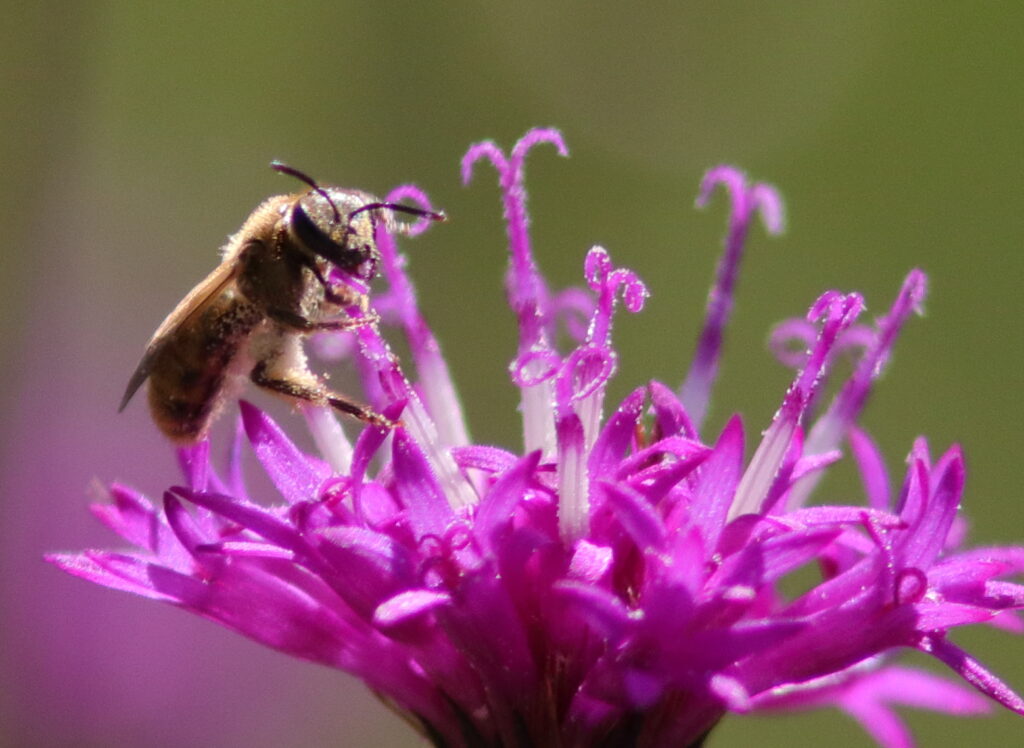
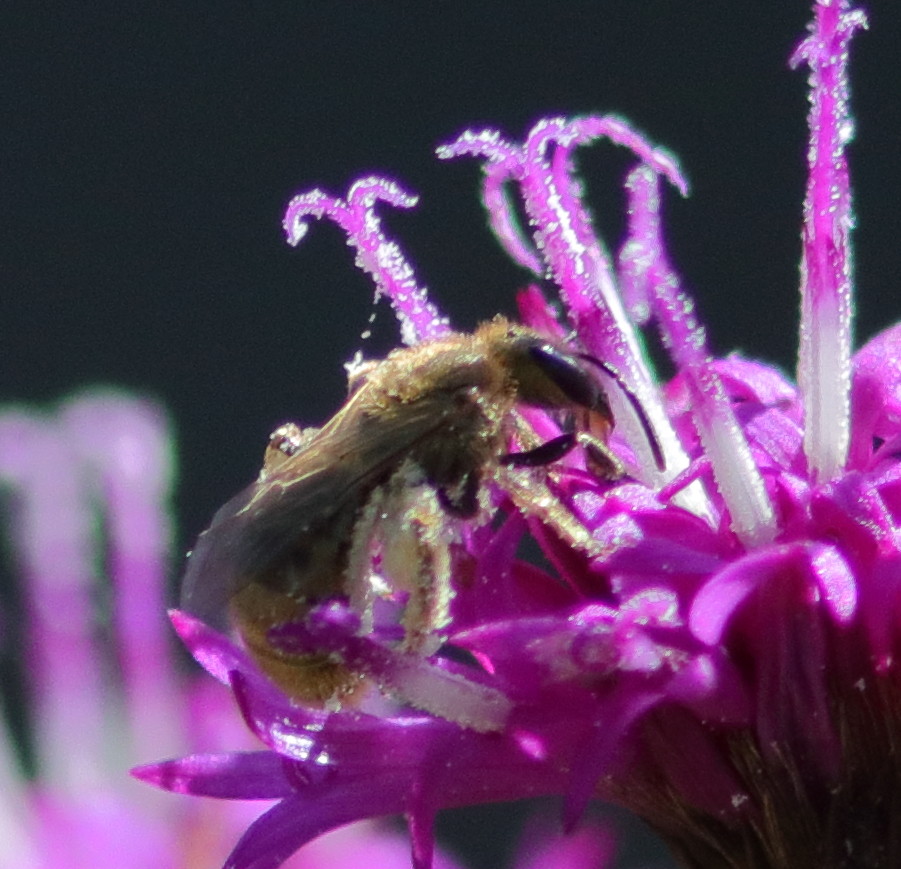
Many people avoid scientific names, but they can offer lots of information about the plant and the history of its discovery by Europeans. I like the Latin name of this plant. The genus Vernonia is honorific name that includes numerous plants called ironweed. Noveboracensis means “of New York” hence, New York Ironweed.
As much as I love this plant’s flowers, each year, I cut back the seed heads. It helps us keep this plant under control. According to the Lady Bird Johnson Wildflower Center, (https://www.wildflower.org/plants/result.php?id_plant=VENO, “Germination is usually low so sow thickly.” When we first planted this plant, we understood that to say this plant does not reseed readily. Don’t believe it. If we do not deadhead the plant after they bloom, we have them scattered here and yon over our and our neighbor’s garden(s). When I deadhead them, I try to only remove the flower stalk, leaving the stem as a home for insects looking for a place to overwinter.
One year, out of curiosity, I counted one branch of our New York Ironweed and found 33 seed heads. Then I open four seed heads and attempt to count the seeds despite the wind, I got 23, 25, 25, and 27 for an average of 25 seeds per head or 825 seeds for the single branch. I estimated there are close to 20 branches per stem, and we had four stems. The math claims that potentially over 60,000 seeds would pepper our yard. Maybe that counts as sewing thickly. Clipping the heads means no seeds for the birds, but it beats pulling New York ironweed, which, once established to a height where it can be seen, has a very strong deep root system. If I had a much larger yard, I would leave the seeds to feed the birds and enjoy the flowerlike appearance of the winter New York Ironweed stalks. Therefore, we keep this plant restricted to a small area in our yard. Such are the sacrifices one must make when the yard is so small.
Comments
4 responses to “Marvelous Magenta”
Thanks for another great post. We too have an awesome patch of NY Ironweed in our garden Bob although I have never found it in the wild here in western New York. It certainly does attract tons of cool insects.
Hi Bob,
I love the math. Certainly we have to leave our seed heads. What a wonderful food source!!!!
Thanks for identifying Peck’s skipper which are plentiful in our Big Backyard.
Very informative – I like it.
We have two species of Vernonia in my area – V. baldwinii and V. lindheimerii. Both are lovely wildlife magnets. I’m glad yours is bringing happiness to your yard!